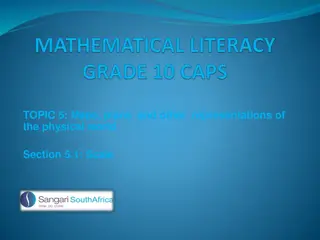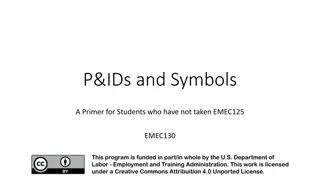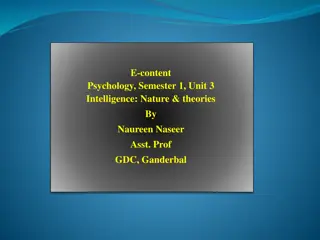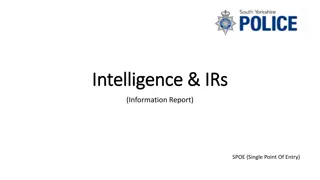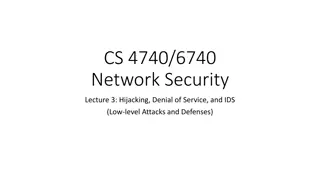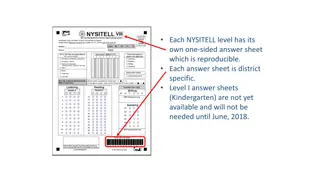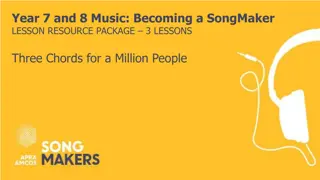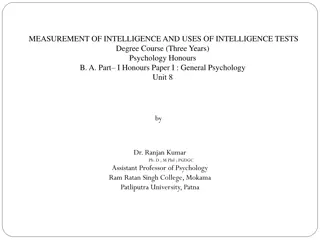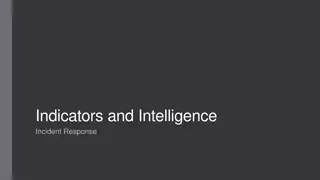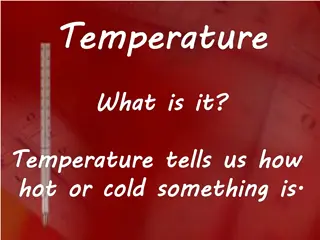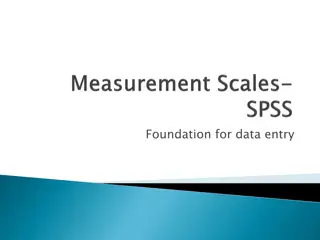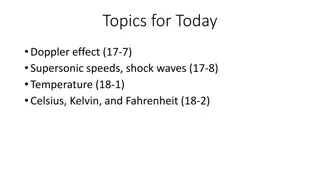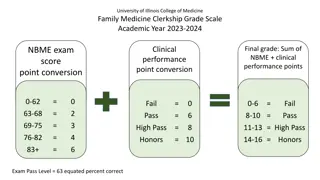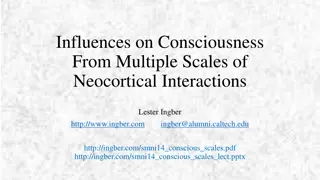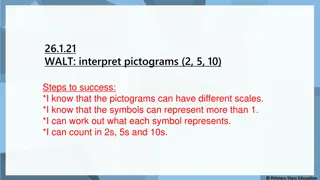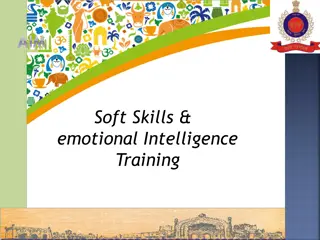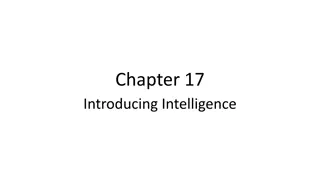Comprehensive Overview of the Intelligence and Development Scales - Second Edition (IDS-2)
The Intelligence and Development Scales - Second Edition (IDS-2), developed by Dr. Jane Yeomans, is a comprehensive assessment tool for individuals aged 5 to 21. It includes cognitive and general development domains, with subtests covering intelligence scales, executive functions, psychomotor skills, scholastic skills, and social-emotional skills. Specialist assessors meeting specific criteria can use the IDS-2, which requires online scoring. The kit comes with various materials for administering the test effectively. The IDS-2 is structured into two main domains and includes rating scales for gathering information on motivation and attitude.
Download Presentation

Please find below an Image/Link to download the presentation.
The content on the website is provided AS IS for your information and personal use only. It may not be sold, licensed, or shared on other websites without obtaining consent from the author. Download presentation by click this link. If you encounter any issues during the download, it is possible that the publisher has removed the file from their server.
E N D
Presentation Transcript
The Intelligence and Development Scales- second edition (IDS-2) Dr Jane Yeomans STEC Committee member SASC conference 2024
IDS-2 basic information Age range 5 to 21 (but note that age ranges vary for some subtests) Published by Hogrefe Current cost for full kit 1,099.00 Scoring: on line scoring only. Purchase of record forms includes scoring credits Standardised: UK standardisation carried out May 2018 to February 2020. Original standardisation was carried out in Germany and The Netherlands Administration time: no time for the test as a whole due to its modular structure
Who can use the IDS-2? IDS-2 was made available to specialist assessors in 2023, subject to assessors meeting the following criteria: Membership in a professional body: All SpLD assessors wishing to use the IDS-2 must maintain active membership in a recognised professional body. This ensures that they adhere to professional standards and ethics. Inclusion in the SASC list: Assessors must hold a current APC (Assessment Practising Certificate) and be listed on the SASC (SpLD Assessment Standards Committee) list of assessors. This adds an extra layer of validation to their expertise and ensures that they are recognised as specialists in the field of learning difficulties. Purchasers may be required to sign a qualification declaration from Hogrefe stating that they agree they have the necessary qualifications and will use the testing material responsibly and within the parameters of their profession. SpLD assessors agree to take the IDS-2 online eLearning, available free from Hogrefe after kit purchase.
Structure of the IDS-2 The test is organised into two broad domains: Cognitive domain, which includes: Intelligence Scales Executive Function scales General development domain, which includes: Psychomotor skills Scholastic skills Social and emotional skills Two rating scales are included that can be used with ages 11 to 20 in order to gather some structured information about motivation and attitude during the assessment (conscientiousness and achievement motivation).
Whats in the suitcase? Stimulus booklets and plastic stand for the booklets Record forms Pupil response booklets for some subtests Materials to use with some subtests: ball, rope, nots and bolts, washers, shapes, cubes, wooden doll, beads and string Templates for washer design Magnetic underlay for washer design
Cognitive domain: underlying theory/concepts The Intelligence Scales are based on CHC (Cattell-Horn-Carroll) theory, which involves: 10 factors: fluid intelligence, crystallized intelligence, quantitative knowledge, reading/writing, short term memory, visual processing, auditory processing, long term memory, processing speed and reaction/decision speed (the IDS2 measures six of these) But .is not based on the concept of g (however g does feature in Carroll s theory) Static model of intelligence Three process components of developmental psychology: universal, differential and individual Constructivist view of development Executive Function scales reflect some underlying theory of key elements of EF (self regulation, working memory, cognitive flexibility)
General development domain: underlying theory/concepts Psychomotor skills Gross and fine motor as discrete elements of motor skills, recognises the visual and perceptual elements Social emotional skills Draws on constructs of social and emotional competence Scholastic skills Logical mathematical reasoning reflects concepts included in DfE programmes of study, and reflects working memory model Language Two models of language acquisition are mentioned. Phonological awareness identified as a key skill Reading Gough and Tumners Simple View
IDS-2 Cognitive Development domain: intelligence scales The intelligence scales consist of 14 subtests that examine the following seven factors of intelligence: Visual processing Long-term memory Processing Speed Auditory short-term memory Visual-spatial short-term memory Abstract Reasoning Verbal Reasoning
IDS-2 Cognitive Development domain: intelligence scales subtests There are 14 subtests, divided into Part 1 and Part 2. There are 7 subtests in each part. The colour highlighting in the list below is Part 1 and Part 2 Visual processing: Shape Design, Washer Design Long-term memory: Story Recall, Picture Recall Processing Speed: Parrots, Boxes Auditory short-term memory: Digit and Letter Span, Mixed Digit and Letter Span Visual-spatial short-term memory: Shape Memory, Rotated Shape Memory Abstract Reasoning: Matrices Completion, Matrices Odd One Out Verbal Reasoning: Naming Categories, Naming Opposites
IDS-2 Cognitive Development domain: administration of Intelligence Scales Using the 14 Intelligence Scales subtests, there are three possible modes of administration which produce the following: An IQ score, using the seven Part 1 of the 14 subtests An IQ profile using all 14 subtests from Parts 1 and Parts 2. This profile gives a composite index score for each of the seven areas of intelligence listed on slide 7 An IQ screen using two subtests (Matrices Completion and Naming Categories)
IDS-2 Cognitive Development domain: Executive Function scales Four subtests are used to assess Executive Function: Divided Attention Listing Words Animal Colours Drawing Routes
IDS-2 General Development domain overview The General Development Domain assesses three areas: Psychomotor skills Two subtests: Gross Motor Skills and Fine Motor Skills Social and emotional skills Three subtests: Identifying Emotions, Regulating Emotions and Socially Competent Behaviour Scholastic skills Eight subtests: Phonological Awareness, Receptive Language, Expressive Language, Single Word Reading, Single Word Non Reading, Reading Comprehension, Logical Mathematical Reasoning, Spelling.
Unravelling the Scholastic scales These scales need a bit more unravelling! The age range varies for some of these scales: Phonological Awareness age 5 to 10 Receptive and Expressive Language age 5 to 10 Reading Comprehension, Single Word Reading, Single Non Word Reading and Spelling age 7 to 20 The online scoring will only give a score for Reading Comprehension if the pupil reads more than 10 words correctly Reading Comprehension passages have to be read out loud (the report format requires silent reading of prose)
Administration The IDS-2 is a modular test so does not have to be administered in its entirety The Intelligence Scales have to be administered in order (7 or 14 subtest administration) All 4 EF scales should be administered in order to produce a score for EF Each of the Psychomotor skills subtests can be administered separately but if a composite score is needed both subtests must be administered Similarly, each of the Scholastic Skills subtests can be administered as stand alones , but if a composite score for reading is needed then all of the reading subtests must be administered
Scoring All scoring is carried out online. There is no option for hand scoring. The scores produced are: Scaled scores for subtests Standard composite score for IQ scales (7 or 14 subtests) Average scaled scores for other areas rather than a composite Confidence Intervals are given for standard composite IQ scores but the online scoring does not generate confidence levels for any other scores Percentile scores are also generated by the online scoring tool
Reliability and validity The standardisation sample is appropriate (but initially there were no data concerning the ethnic make up of the sample) Overall reliability criteria are met, with some variations for some subtests. Reliability is an issue for the social and emotional subtests Content validity: based on expert judgements Construct validity: data available for some parts of the test, but Scholastic Skills construct validity established via parent questionnaires
IDS-2 and the cognitive profile element of a diagnostic report [1] Aspect of the report format Matching Aspect of the IDS Verbal Ability Verbal Reasoning Index from the Intelligence Scales (two subtests, Naming Categories, Naming Opposites) Measures of verbal ability may include vocabulary knowledge, verbal reasoning ability and general knowledge. Visual/Non-Verbal Ability Abstract Reasoning Index from the Intelligence Scales (two subtests, Matrices Completion, Matrices Odd One Out) Measures of non-verbal ability may include visual-spatial perception, pattern recognition, abstract reasoning skill, logic, problem solving and deduction. Working Memory There is no specific Working Memory Index. Scores can be reported for Auditory and Visual-Spatial short term memory Measures of the ability to maintain and manipulate information in active attention. This would include phonological memory (ability to identify accurately, retain briefly, and repeat sequences of sound).
IDS-2 and the achievement profile element of a diagnostic report [2] Aspect of the report format Matching Aspect of the IDS Processing Speed Processing Speed Index from the Intelligence Scales (two subtests, Parrots and Boxes) Measures relatively simple repetitive cognitive tasks, quickly, accurately and fluently). This would include rapid symbolic naming (ability to retrieve accurately well- known phonological responses fluently from long-term memory in response to a visual stimulus). Phonological Awareness of processing speed (ability to perform Phonological Awareness subtest from the General Development Domain Scholastic Scales Measures accurately manipulate the separate units of sounds in words, known as phonemes . of phonological identify, awareness (ability to discriminate between and
IDS-2 and the achievement profile element of a diagnostic report [1] Aspect of the report format Single-Word Reading Matching Aspect of the IDS Single Word Reading and Single Word Non Reading subtests from General Scholastic Scales note that these are timed for 30 seconds) Development domain A standardised graded, single-word reading test A timed sight-word reading test. A non-word reading task, timed or untimed, should be included. Prose Reading Reading Development domain Scholastic Scales (note that passages are read aloud and there is no opportunity to read silently) Comprehension subtest from General A standardised test of reading comprehension of continuous prose. (Oral is preferred but as appropriate to the age/stage of the student). When a silent reading comprehension task is used, it is strongly recommended that oral reading of continuous prose is also included and used for qualitative analysis. Where possible, reading speed/fluency and accuracy should be included Spelling Spelling subtest from General Development domain Scholastic Scales A standardised graded single-word spelling test
IDS-2 and the achievement profile element of a diagnostic report [2] Aspect of the report format Matching Aspect of the IDS Writing Writing is not included in the IDS-2 A free writing task, appropriate to the age and level of study, should be given and analysed to provide information about qualitative features such as grammar, sentence complexity, coherence, vocabulary choice, spelling accuracy, writing speed and handwriting legibility. Sensitivity should be shown in the language used to describe patterns of errors. Again, it can be helpful to identify areas that might benefit from specific support and intervention. A copying task might also be given so that difficulties relating to motor skills and the process of composition can be teased apart. Number, Estimation, Calculation Logical Mathematical Reasoning from General Development domain Scholastic Scales (note that this only looks at problem solving and not at computation skills) A standardised graded test of mathematics attainment may be included at the assessor s discretion. However, a low score on such a test cannot be used as sole evidence of dyscalculia. Other measures of number, estimation and calculation would need to be included and analysed alongside a history of difficulty
Strengths Wide range of assessment materials Covers many areas needed to be assessed in a diagnostic assessment for up to age 10:11 Modular structure helps with administration Overall reliability is sound and the standardisation sample is good Easy to administer because the stimulus book contains examiner s instructions Mostly UK standardisation Executive Function assessment useful extra Online scoring reduces likelihood of human error in calculations/lookups
Issues for examiners to consider Suggested use of the EF subtests for assessing phonological recall is not very convincing Limited by age limits, so not suitable for some aspects of a diagnostic assessment with pupils aged above 11 (despite the overall age range being set at 5 to 21) Weak reliability for social and emotional subtests Some construct validity questionable, where parent ratings are used (scholastic skills and motivation/attitude) High language load for the social and emotional subtests Pre requisite for scoring reading comprehension gives no flexibility for examining this area Timed element of single word reading Very heavy suitcase!
Finally Questions? Comments? Feedback? The Hogrefe panel of experts will participate in the Q and A session


